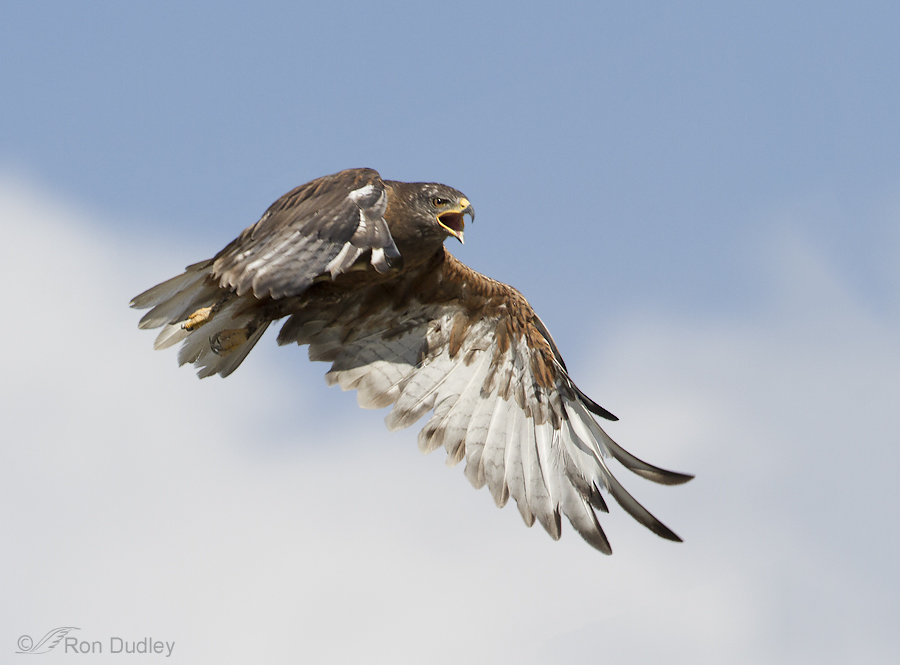Juvenile Burrowing Owl – Maturing But Still Awkward And Clumsy
Juvenile Burrowing Owl plumage changes rapidly as they mature, as does their awkwardness. But this one is still amusingly clumsy.
Juvenile Burrowing Owl plumage changes rapidly as they mature, as does their awkwardness. But this one is still amusingly clumsy.

Last week, partially in an effort to get away from the aggravations of the blog hosting problems I’d been having, I decided to make the extra long drive to extreme northern Utah in a quest for Swainson’s Hawks. We found quite a few and a delightful bonus was a plethora of Ferruginous Hawks in the same area.
The Gray Partridge has a fairly limited range in North America and most folks don’t get to see them so I thought some of my readers might be interested in a post on the species. This bird prefers the grasslands and grainfields of our northern wheat-belt so they’re fairly common on our family farm in northwest Montana.
Gray Partridges are often called Hungarian Partridges, or “Huns” for short.
This might just be the rattiest looking raptor I’ve ever encountered in the wild.
I found this juvenile Red-tailed Hawk three days ago in Box Elder County, Utah. It was too far away for good photos but even so I scoped it out with my lens for ID and to look for anything unusual.
This bird was one of the early migrants into Utah in the first week of April this year. Swainson’s Hawks winter in South America, which means they funnel through narrow Central America as they migrate each way. To give you an idea of how many birds that involves, 845,000 of them have been counted as they passed over Veracruz, Mexico in a single autumn. Incredible! 1/2500, f/6.3, ISO 500, 500 f/4, natural light, not baited, set up or called in I found this bird in a remote area of Box Elder County, hunting from power poles. One of the reasons I like this image is because it’s fairly unusual for me to get a raptor in full flight (instead of just after taking off, note the position of the feet) when it’s not soaring or gliding with its wings in a horizontal position. I’m always interested when I can get images that contrast the ventral and dorsal colors and plumage patterns of the same species in flight. Swainson’s Hawks are quite dark dorsally. 1/2500, f/6.3, ISO 500, 500 f/4, natural light, not baited, set up or called in But when you can get good light in the ventral view, the contrast is striking. Even though these two images were taken 34 minutes apart, I’m relatively certain that it’s the same bird in both shots. This hawk was coming to land on a power pole and even though the flight position screams for a perch in front of the bird, I took the liberty of cloning out the ugly pole…
This morning we headed north once again in quest of Golden Eagles. We found a few but they were too far away for decent photographs. The consolation prize was this cooperative Swainson’s Hawk – our first of the season which delighted us. In fact there were two of them, hanging out in the same general area. 1/1600, f/6.3, ISO 500, 500 f/4 This bird was particularly fond of a couple of telephone poles in northern Box Elder County. Here it is returning to the pole after leaving it for a short and unsuccessful hunting foray. I’m not particularly happy with the wire and insulator but I liked the landing pose. 1/2000, f/6.3, ISO 500, 500 f/4 Sometimes this hawk perched on the top of the pole but one time it landed on the second wire strung below the first one. Here it is taking off from that position with the pole directly out of frame to the left. I like the dynamics of the take-off in contrast to the greater concentration demanded during landing. 1/2500, f/6.3, ISO 500, 500 f/4 I got a few shots of the hawk in full flight with legs tucked away cleanly. 1/2000, f/6.3, ISO 500, 500 f/4 Another take-off and for this one I had to clone out a small bit of the wire at lower left. Cloning is something I don’t like to do but I do succumb to the temptation occasionally in certain situations. A judgement call… 1/2500, f/6.3, ISO 500, 500 f/4 I was…